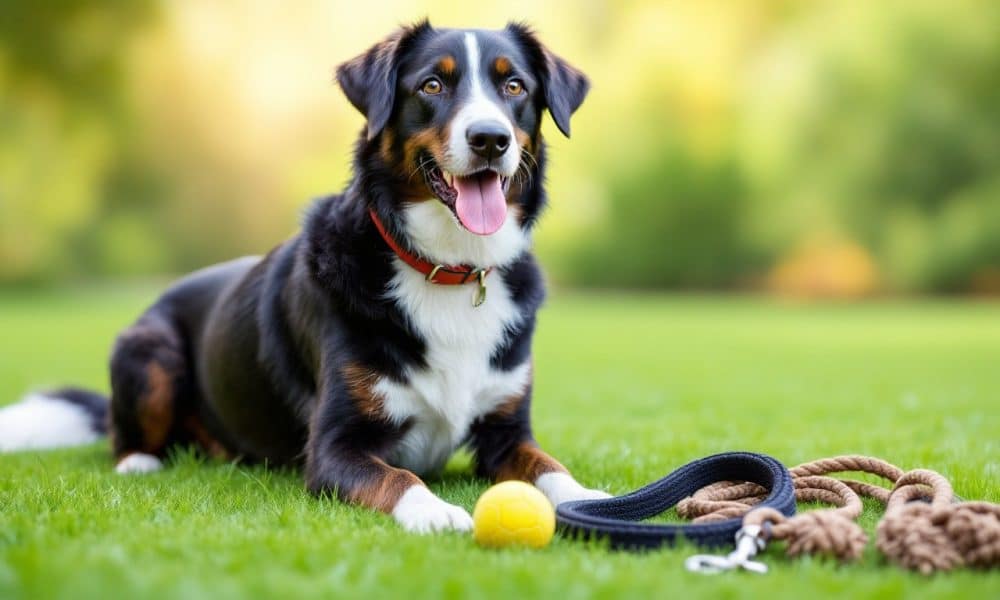
“This post contains affiliate links, and I will be compensated if you make a purchase after clicking on my links.”
At DogingtonPost, we know that developing good habits for dog training is key to success. Consistent, positive training methods can transform your pup’s behavior and strengthen your bond.
In this post, we’ll explore practical strategies to establish effective training routines and master positive reinforcement techniques. Get ready to unlock your dog’s full potential and enjoy a harmonious relationship with your furry friend.
Why Consistency Matters in Dog Training
The Power of Routine
Dogs thrive on routine. When you establish a consistent training schedule, your dog learns to anticipate and prepare for these sessions. This predictability reduces anxiety and increases focus. Routine helps them feel secure, reduces anxiety, and creates a foundation for consistent training and better behavior.
A study found that dogs receiving weekly training required fewer training sessions and exhibited higher success rates at each level of training compared to dogs trained daily. This highlights the significant impact of routine on training outcomes.
Building Trust Through Consistency
Consistency in training is vital for your dog’s understanding and progress. When your dog knows what to expect from you, they feel more secure and are more likely to respond positively to training.
Dr. John Bradshaw, an anthrozoologist at the University of Bristol, states that consistent behavior from owners leads to more confident and less anxious dogs. This trust extends beyond training sessions, improving your overall relationship with your furry friend.
Long-Term Benefits of Regular Training
Regular training sessions yield impressive long-term results. The American Kennel Club reports that dogs who receive consistent training are less likely to develop behavioral problems later in life. This underscores the importance of making training a daily habit.
Moreover, consistent training helps your dog generalize learned behaviors across different environments. If you practice “sit” in various locations and situations, your dog will understand that the command applies everywhere (not just in your living room during training time).
Keeping Training Fun and Engaging
Consistency doesn’t mean rigidity. You can still keep training fun and engaging while maintaining a regular schedule. Mix up your training exercises, locations, and rewards to keep your dog interested and motivated. Try using different toys or treats (always in moderation) to add variety to your sessions.
Now that we understand the importance of consistency in dog training, let’s explore how to establish an effective daily training routine that will set you and your furry friend up for success.
How to Create an Effective Daily Training Routine
Set Specific Training Times
Creating a daily training routine for your dog will ensure consistent progress and long-term success. Research has shown that dogs trained 1–2 times per week had significantly better acquisition than daily trained dogs. This approach allows your dog to learn and practice new skills without becoming overwhelmed or bored.
Maximize Everyday Moments
While dedicated training sessions are important, don’t overlook the power of incorporating training into your daily activities. Use meal times as an opportunity to practice commands like “sit” or “stay” before placing the food bowl down. By using a dog’s natural food drive, you can impart lessons of leadership, calmness, impulse control, and respect. During walks, work on leash manners and recall. These small, frequent training moments reinforce good behavior throughout the day.

Mix Structure with Spontaneity
Balance structured training sessions with spontaneous learning opportunities. For example, if your dog becomes excited when guests arrive, use this as a chance to practice “calm greetings.” A study by the University of Lincoln found that dogs learn more effectively when training is integrated into real-life situations.
Use High-Value Rewards
To keep your dog engaged during training, use high-value treats that you reserve specifically for these sessions. Dr. Ian Dunbar, a renowned veterinarian and animal behaviorist, suggests using small, soft treats that your dog can consume quickly to maintain focus. (Remember to adjust your dog’s regular meal portions to account for these extra calories.)
Track Progress and Adjust
Keep a training journal to monitor your dog’s progress. Note which commands your dog has mastered and which need more work. This allows you to adjust your routine as needed and celebrate milestones. The Association of Professional Dog Trainers recommends reviewing and updating your training plan every two weeks to ensure continued progress.
Consistency and patience are key elements in dog training. Every dog learns at their own pace, so it’s important to tailor your approach to your individual pet’s needs. As you establish your daily training routine, you’ll find that positive reinforcement techniques play a vital role in shaping your dog’s behavior. Let’s explore how to master these techniques in the next section.
How to Use Positive Reinforcement Effectively
The Science of Timing
Positive reinforcement works best when you reward your dog immediately after the desired behavior. Dr. Sophia Yin, a renowned veterinary behaviorist, stressed that rewards should follow the desired action within half a second. This quick response helps your dog connect the reward with the correct behavior. You can use a marker word like “yes” or a clicker to signal the exact moment of success (especially useful when the reward can’t be given instantly).

Selecting Motivating Rewards
Dogs respond differently to various rewards. What motivates your dog depends on their personality and the situation. Some dogs prefer toys over treats, while others value praise and petting above all. Try different rewards to discover what excites your dog most.
A University of Lincoln study found that dogs responded more positively to verbal praise when combined with physical affection. Don’t hesitate to pair a enthusiastic “good boy” with a belly rub for maximum effect.
Progressive Training Techniques
Start with simple tasks and increase difficulty gradually. This approach, known as shaping, involves rewarding small steps towards the target behavior. For instance, when teaching your dog to “stay,” first reward them for remaining in place for just a second, then slowly extend the duration.
The American Veterinary Society of Animal Behavior recommends a variable reinforcement schedule as your dog becomes more skilled. This means you should reward the behavior intermittently rather than every single time, which can actually strengthen the behavior long-term.
Consistency Across the Family
For positive reinforcement to succeed, all family members must use the same cues and reward system. This consistency prevents confusion and helps your dog learn faster. Create a simple chart or guide for everyone to follow, ensuring uniform training methods throughout the household.
Adapting to Different Environments
As your dog progresses, practice commands in various locations and situations. This helps your dog generalize the learned behaviors. Start in a quiet room, then move to the backyard, and eventually to busier environments like parks. This gradual exposure ensures your dog responds reliably regardless of the surroundings.
Final Thoughts
Good habits for dog training require dedication and patience. Consistent training builds trust, reduces anxiety, and helps your dog understand expectations. Regular sessions, combined with spontaneous learning opportunities, keep training engaging for both you and your furry friend.
Positive reinforcement encourages desired behaviors when you reward promptly and consistently. Adapt your techniques to different environments and increase task difficulty gradually to ensure reliable responses in various situations. Well-trained dogs become happier, more confident, and less prone to behavioral issues.
We at DogingtonPost encourage you to implement these good habits for dog training today. With persistence and positivity, you’ll achieve amazing progress with your canine companion (every small step forward counts as a victory). Start your journey towards a stronger bond with your dog now!







